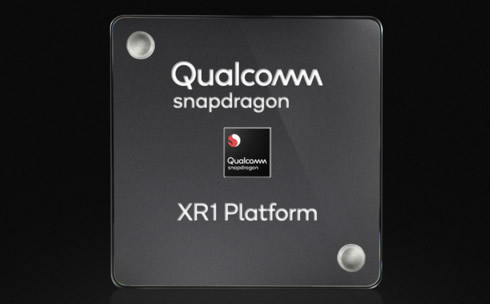
Qualcomm Reveals Dedicated Qualcomm Snapdragon XR1 Extended Reality
Qualcomm debuted the Qualcomm Snapdragon XR1 Platform, a dedicated Extended Reality (XR) platform during a launch event leading up to the Augmented World Expo (AWE).
XR1 is a platform that promises to offer mainstream users high-quality XR experiences while enabling OEMs to develop mainstream devices. The XR1 platform also has special optimizations for Augmented Reality (AR) experiences with Artificial Intelligence (AI) capabilities offering better interactivity, power consumption and thermal efficiency.
Meta, VIVE, Vuzix and Picoare already developing on the first dedicated XR1 platform.

"As technology evolves and consumer demand grows, we envision XR devices playing a wider variety of roles in consumers' and workers' daily lives," said Alex Katouzian, senior vice president and general manager, Mobile Business Unit, Qualcomm Technologies, Inc. "By integrating powerful visuals, high-fidelity audio, and rich interactive experiences, XR1 will help create a new era of high-quality, mainstream XR devices for consumers."
XR1 integrates Qualcomm Technologies' heterogeneous compute architecture, including the ARM-based multicore Central Processing Unit (CPU), vector processor, Graphics Processing Unit (GPU) and Qualcomm AI Engine. Other features include an advanced XR software service layer, machine learning, the Snapdragon XR Software Development Kit (SDK) and Qualcomm Technologies connectivity and security technologies.
The XR1 platform also provides an AI engine for on-device processing. This engine provides Qualcomm's customers the ability to process AI-use cases and run high performing, power efficient machine learning based computer vision algorithms that can help with key AR use cases like better pose prediction, object classification, etc.
For consumers, the XR1 platform will power VR HMDs and content at Ultra high-definition 4K video resolution at up to 60 frames per second. New dedicated hardware and software algorithms within its Qualcomm Spectra Image Signal Processor (ISP) can help reduce unwanted noise from snapshots producing an improved final picture in high-quality AR headsets. The integrated display processor provides a range of display options with hardware accelerated composition, dual-display support, 3D overlays and support for leading graphics Application Programming Interfaces (API), including OpenGL, OpenCL and Vulkan. The platform also features vision processing capabilities fundamental for technologies like Visual Inertial Odometry (VIO), which lets users move around in the virtual world or interact with augmented objects in an AR experience.
The XR1 platform uses Qualcomm Technologies 3D Audio Suite, Qualcomm Aqstic Audio Technologies, and Qualcomm aptX Audio for high-fidelity audio and "always-on, always-listening" voice assistance as well as Bluetooth playback. XR1's head-related transfer functions (HRTF) enable users' ears to synthesize binaural sound that feels like it comes from a specific point in space.
With three- and six-degrees of freedom (3DoF, 6DoF) head tracking and controller capabilities for XR devices, XR1 opens a new XR playground for mainstream users. An integrated sensor hub and optimized sensor fusion abilities allows users to experience rich interactions with motion to photon latencies well below the scientifically required 20ms.





















